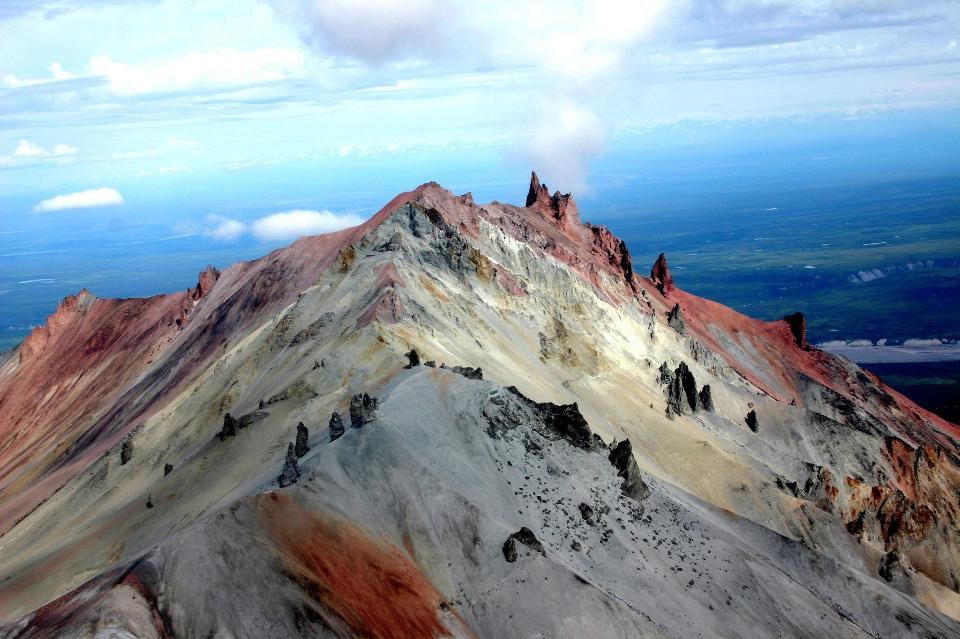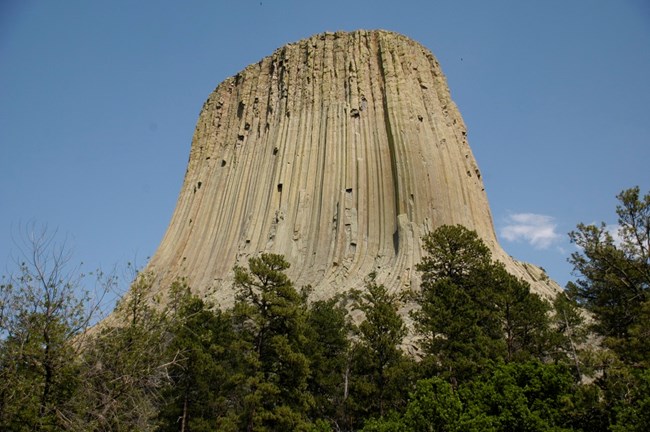
NPS Photo
Introduction
Magma is stored below the surface in reservoirs called magma chambers. It creates and follows paths called conduits to the surface. This network is often referred to as the volcano's plumbing system. These networks can cover vast areas.
When magma cools and solidifies in these spaces, Intrusive or plutonic igneous rocks are formed deep beneath the Earth’s surface. Intrusive features like stocks, laccoliths, sills, and dikes are formed. If the conduits are emptied after an eruption, they can collapse in the formation of a caldera, or remain as lava tubes and caves.
The mass of cooling magma is called a pluton, and the rock around is known as country rock. Slow cooling over thousands to millions of years allows large visible crystals to form. Common igneous rock types include granite, gabbro, and diorite. Large plutons can form along convergent tectonic plate boundaries.
Plutonic rocks are hard and erode slowly, so in many places they have become exposed at the surface after the rocks above erode away over millions of years. In the U.S. massive granite landforms can be found in over 30 U.S. states, including many that are iconic National Park features. El Capitan in Yosemite National Park is the largest granite monolith in the world.
Intrusive Igneous Features and Landforms

NPSphoto
-
Batholiths are Plutons that have been exposed on the surface through uplift and erosion.
-
Sills and Dikes are tabular bodies of magma that intrude into a fracture. Sills follow bedding planes, whereas dikes cross-cut beds.
-
Monadnocks, also called Inselbergs, are isolated rock hills standing in a level plain. These are often the result of softer sedimentary rocks eroding around a hard intrusive igneous body. Devils Tower National Monument (Wyoming) is an example of a monadnock.
-
Volcanic necks are the remnants of a volcano’s conduit and plumbing system that remain after most of the rest of the volcano has been eroded away.
- Inverted topography arises when lava flows that filled valleys at the time of their eruption later hold up mesas because their resistance to erosion is greater than most other rock types.
Learn More
Photo Gallery
Geological Monitoring
Intrusive Igneous Landforms in Parks
The following is a partial list of National Park Service units that include Intrusive Igneous landforms:
-
Acadia National Park, Maine—[Geodiversity Atlas] [Park Home ]
-
Black Canyon of the Gunnison National Monument, Colorado—[Geodiversity Atlas] [Park Home]
-
City of Rocks National Reserve, Idaho—[Geodiversity Atlas] [Park Home]
-
Devils Tower National Monument, Wyoming—[Geodiversity Atlas] [Park Home]
-
Grand Teton National Park, Wyoming—[Geodiversity Atlas] [Park Home]
-
Joshua Tree National Park, California—[Geodiversity Atlas] [Park Home]
-
Kings Canyon National Park, California—[Geodiversity Atlas] [Park Home]
-
Mojave National Preserve, California—[Geodiversity Atlas] [Park Home]
-
Mount Rushmore National Memorial, South Dakota—[Geodiversity Atlas] [Park Home]
-
Sequoia National Park, California—[Geodiversity Atlas] [Park Home]
-
Yosemite National Park, California—[Geodiversity Atlas] [Park Home]
Last updated: October 5, 2022
